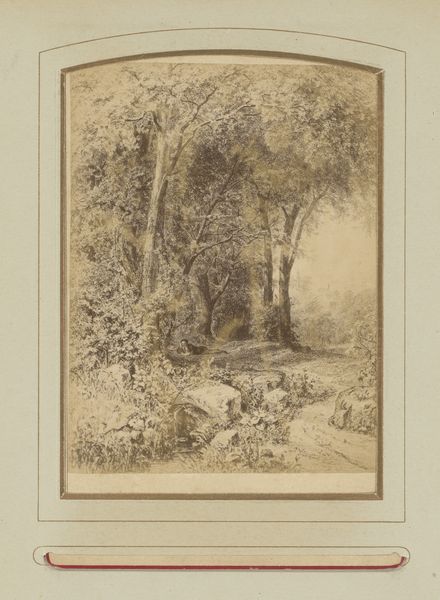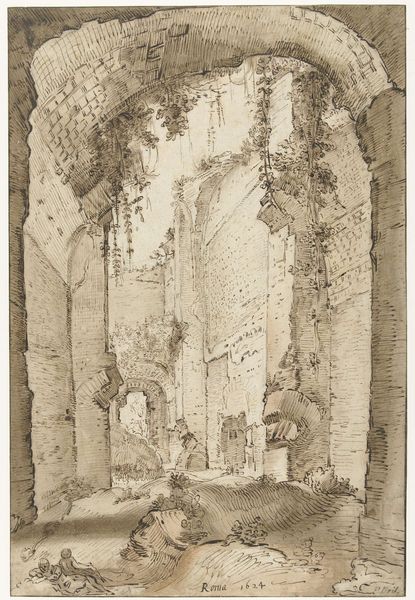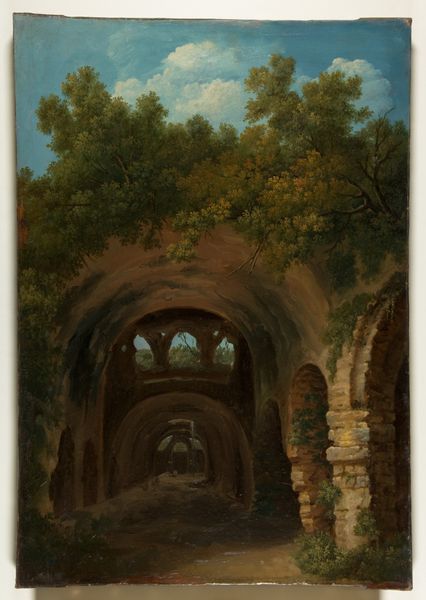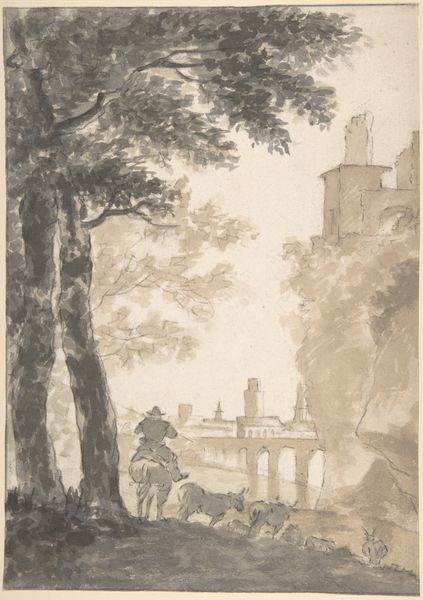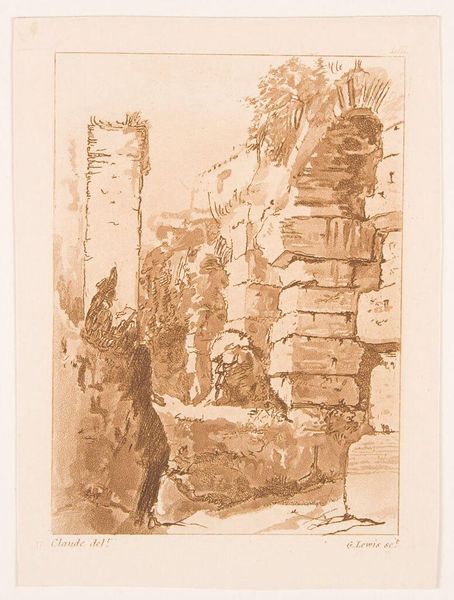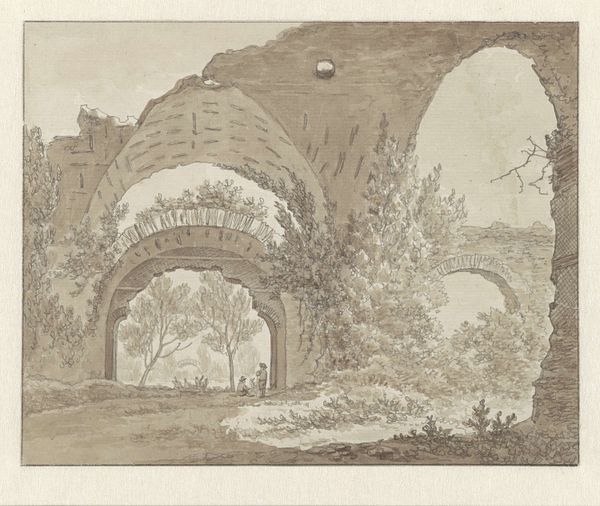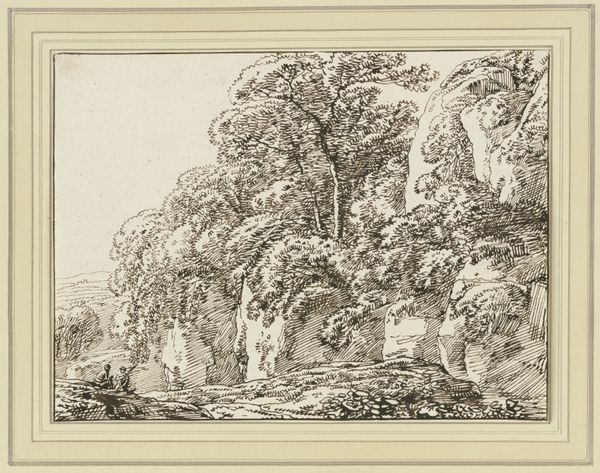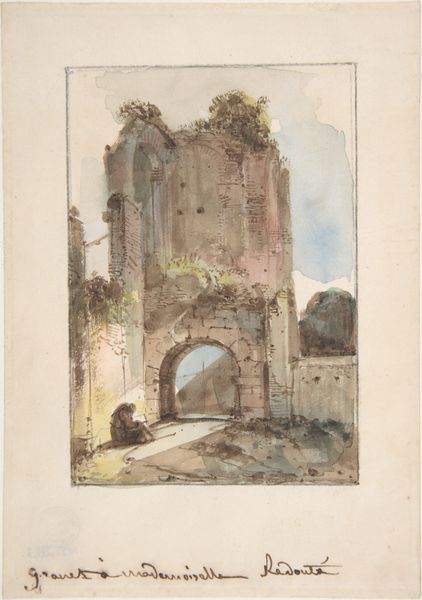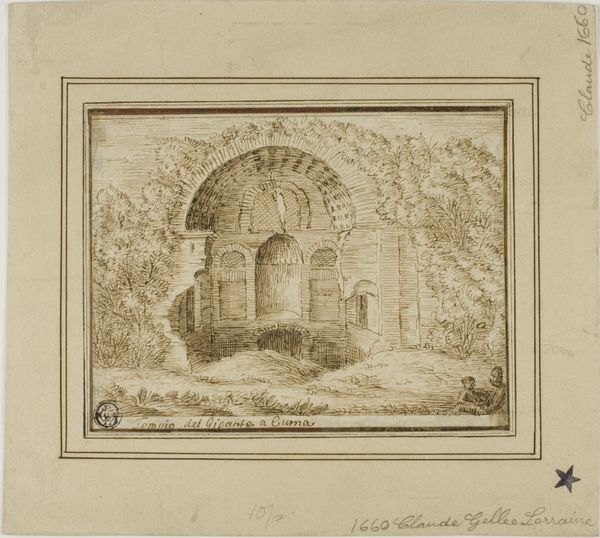
Dimensions: 18 1/4 x 13 in. (46.4 x 33 cm)
Copyright: Public Domain
Curator: It strikes me immediately as a rather idyllic scene, even with the looming structure. A tranquil sort of monumentality. Editor: This is Hubert Robert's "Entrance to the Grotto of Posillipo," a watercolor on toned paper dating from 1745 to 1808, now residing here at the Met. Robert was quite taken with ruins, both real and imagined. Curator: Yes, but there's something particularly interesting about the material here. The warm tones of the watercolor bleed into the paper, softening the hard edges of the architecture. Is that intentional, to suggest a blurring of the natural and the man-made? Editor: Absolutely. The choice of watercolor lends itself to that ethereal quality. Robert was deeply engaged in creating not just a picture of the grotto, but an experience—a staged, curated vision of the past for his contemporary audience. How these paintings end up in the Met speaks of evolving tastes in collecting landscapes. Curator: It really highlights how labor and materiality contribute to the viewing experience, especially with how watercolor differs from oils. There is also the labor of those rendered in the composition to think about. Editor: And the marketing of such imagery, too! Prints like this would have circulated widely, shaping perceptions of the Italian landscape and contributing to the Grand Tour phenomenon. The romanticizing of these landscapes fueled social desires, I'd venture to say. Curator: You can almost feel the dampness in the air, and yet it romanticizes the lives of those traveling or residing there, as we witness figures depicted beside carts or even alone in this space. How were these watercolor pigments actually sourced? It feels important given what Robert sets out to convey about the monument in nature. Editor: And it played a role in establishing him, securing his role within artistic institutions in France; he gained his reputation by creating and showing this artwork in cultural institutions such as the Met. Curator: Indeed, his prominence underscores the complicated relationship between the artistic process and these works of art ending up on these walls in the first place. Editor: Well, it's been a delight to explore how Robert presented and negotiated perceptions of place through his choices. Curator: A worthwhile discussion around materiality and legacy.
Comments
No comments
Be the first to comment and join the conversation on the ultimate creative platform.



